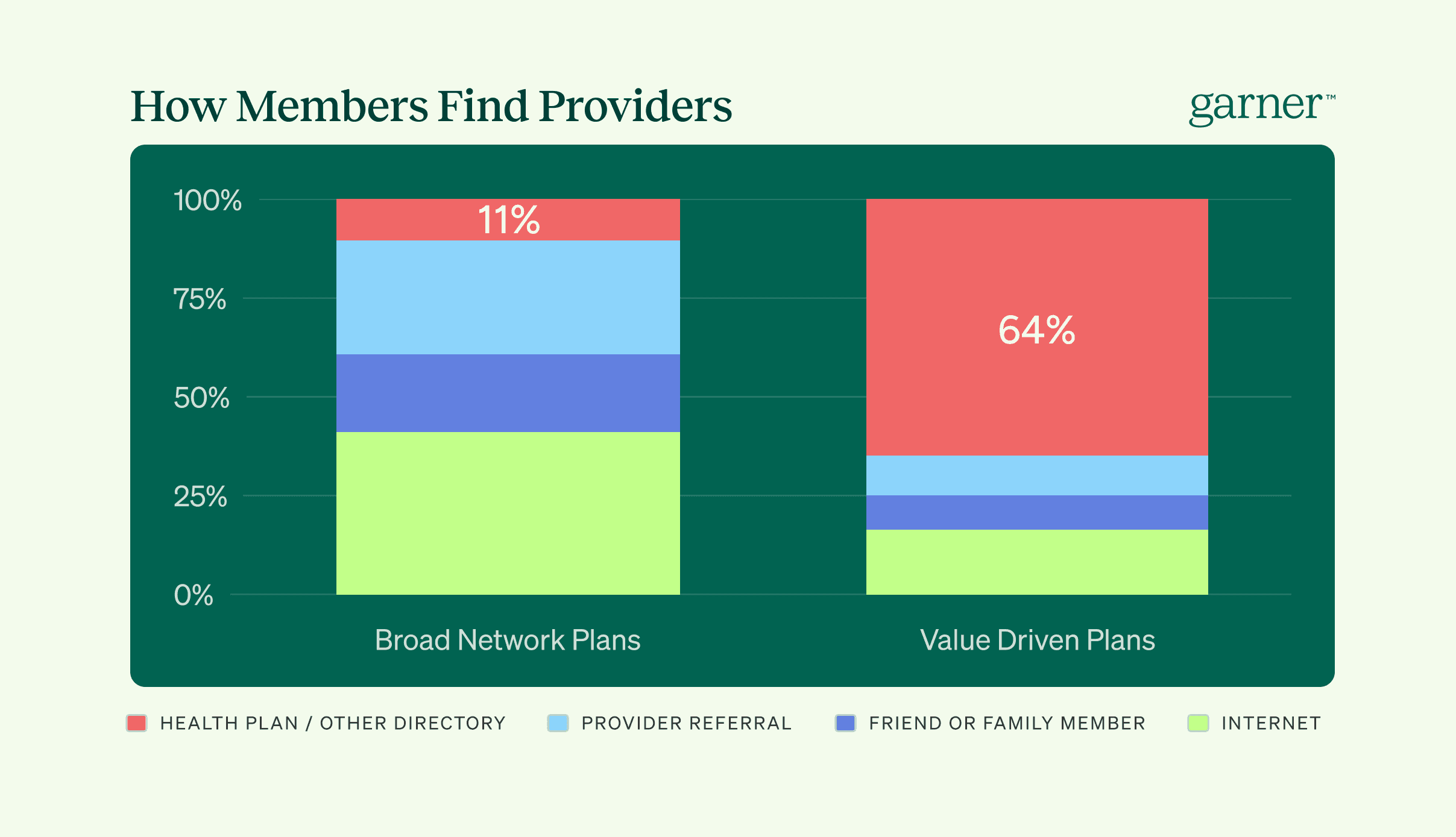Facing one of the worst years for healthcare cost increases in history, employers are being forced to rethink their benefits strategies, creating unprecedented demand for “value-driven” plans such as tiered networks, variable copays, reference-based pricing, and unique solutions like Garner. Unfortunately, few employers are aware of a hidden threat undermining the success of these solutions: poorly maintained health plan provider directories notorious for their inaccurate addresses, phone numbers, specialties, and availability. The extent of these inaccuracies is staggering. Our data suggests that only 27% of the time health plan directories contain the accurate information needed to reach a provider. As employers add plan designs that include more directed steerage, the accuracy of these directories will become an increasingly important issue. The implication is clear: to succeed with value-driven plans, employers must provide employees with accurate directories that enable effective appointment booking.
Value-Driven Healthcare is Radically Shifting How Patients Find Care
If these directories are so notoriously bad, why is this suddenly an issue? The answer lies in these same value-driven solutions. Previously, broad network health plans allowed employees to find a doctor using any method they preferred—a referral from a friend, searching online, or even dropping into an office they drove by. But value-driven solutions all have a benefit design that steers members to a certain subset of providers. For example, if I’m a member of a tiered or narrow network, but my health plan directory cannot be relied upon to help me find a doctor that is in-network, in the correct subspecialty, and with upcoming availability, what do I do? Many members of these plans spend hours first finding a doctor that meets their needs and then calling to validate the network status or copay levels of the doctor.
As employers deploy these solutions to their employees, this shift is exposing critical weaknesses in this foundational component of healthcare infrastructure. The chart below illuminates the profound impact of this structural shift in care-seeking. In traditional broad networks, only 11% of members consult their health plan directory when selecting providers—most rely on word-of-mouth recommendations or general internet searches. This figure surges to 64% in value-driven plans, where choosing the right provider directly impacts out-of-pocket costs.

Figure 1: How Patients Find New Providers. Source: Kyruus and Garner Data Estimates
Just How Bad Are These Directories?
Every month, Garner performs a “secret shopper” survey of hundreds of doctors to verify their directory data and determine the percentage of time a member can successfully book an appointment. We evaluate this based on: an accurate phone number where someone answers the phone, an accurate address and specialty, and doctor availability within 12 weeks. Our latest data suggests that the large national insurance carrier directories meet all these criteria only 27% of the time, consistent with findings from various government and academic studies performed over the past 10 years.

Figure 2: The Accuracy of Insurance Carrier Directories. Source: Garner Data
The scope of the problem is large and solving it isn’t easy: approximately 15 million provider-address combinations are listed in insurance directories nationwide, each requiring continuous validation across multiple data points. With providers frequently changing locations, the problem has persisted for years. Below we break down the largest drivers of directory inaccuracy. As you can see, standard insurance directories are wrong for several reasons.

Figure 3: Reasons for Directory Inaccuracy. Source: Garner Data
Compounding this issue, most insurance directories include only 23 specialties, far fewer than the 82 subspecialties we believe employees often need to access. This limitation transforms what should be a straightforward provider search into a time-consuming trial-and-error process. For example, an employee who needs to see a provider who specializes in a specific hearing issue (an otologist) will find it frustrating to use a directory where the search results provided are full of generalist ear, nose, and throat providers who cannot treat their issue.

Figure 4: Specialties Covered by Directories vs. Required by Patients. Source: Garner Data
The Limitations of Telemedicine Solutions
While telemedicine initially appeared as a potential solution to access challenges, usage patterns reveal its constraints: telemedicine accounts for just 1.6% of employer healthcare costs. With telemedicine usage declining post-pandemic and now representing only 15% of visits, it is clear that comprehensive in-person care networks remain indispensable to healthcare delivery. This reality reinforces the critical importance of accurate provider directories in facilitating access to physical care locations. The chart below illustrates telemedicine's diminishing role in healthcare delivery.

Figure 5: Telemedicine vs. In Person Care: Appointment Volume and Dollars Spent
Building Next-Generation Directory Infrastructure at Garner
Addressing the directory accuracy crisis requires a sophisticated combination of technology and human verification.
At Garner, we realize that in order to make our value-driven plan designs work for both employers and employees, we need to ensure patients can actually use our tool to find the phone number and address of a Top Provider that meets their appointment availability needs. In order to accomplish this, we’ve taken two key approaches:
We leverage our vast claims data, a modern technology stack, and new AI tools to understand provider directory data with greater precision than previously possible. Daily, we ingest millions of data points on which providers have started to bill in different zip codes, which providers stopped adding “new patient visit” codes to their claims, and which providers have updated their website and other online profiles. This data allows us to establish a highly accurate baseline for provider phone, address, and appointment availability data.
Because our program focuses only on recommending Top Providers, we do additional manual verification of these specific provider offices to ensure that we have all of their data listed correctly.
As a result, the verified providers we show in our digital tools have the correct contact information (phone and address) 90% of the time which is an 84% reduction in member pain in finding a Top Provider as compared to the carrier directories.

Figure 6: Directory Accuracy: Average National Carrier vs. Garner. Source: Garner Data
Future Implications for Employers
The transition to value-driven healthcare represents more than a simple plan design change—it requires a fundamental rethinking of how employees navigate their healthcare journey. Benefits leaders must recognize that the success of value-driven plans depends on employees’ ability to identify and access high-quality providers. Failing to address this issue risks further alienating employees from care.
As healthcare costs continue their upward trajectory, and employers navigate the transition to value-driven plans, the quality of their provider directory infrastructure will increasingly dictate their ability to deliver on the promises of cost control, care quality, and accessibility.

